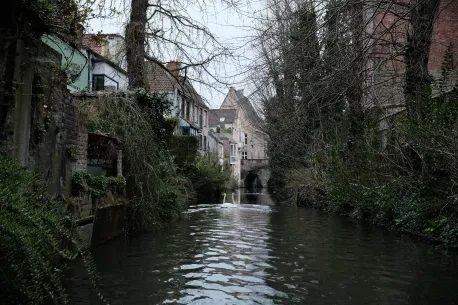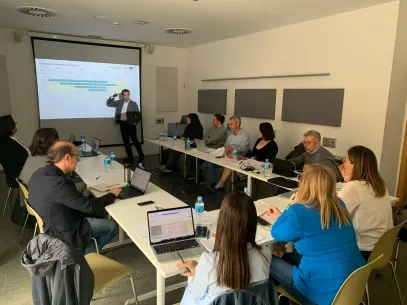
To do this effectively, a fundamental action is to know –in the best way possible– the type of EV users that can potentially collaborate. Because sometimes, when designing products and services oriented to end users, it is likely to make the mistake of assuming too much about what they are expecting, their concerns, their priorities, etc. In this way, listening to enthusiasts can provide information that is just as useful as that obtained by listening to those who are less familiar with these applications. And of course, new ideas, until then probably unnoticed, can always emerge.

Faraday Keys is a partner of the consortium of AIRQON with extensive experience in implementing electric mobility and renewable energies. They help companies develop business models based on innovation and growing new markets. Consequently, they have a proper background to lead the important task of mapping considerations of EV drivers to participate or not in AirQon. As part of this research, a user panel has been interviewed, formed by 21 people –17 men and 4 women– with an age between 27 and 58.
When talking about events, the first thing to consider is the type: what events do EV users normally go to? Most of the interviewees coincide in pointing to music festivals, concerts, and theatre and food festivals. After these, they usually go to sporting events and business fairs or conferences. And finally, a minority mentioned events on the beach.
Knowing the type of event that EV users mainly attend, the following question should be asked: would they consider going to other events if they were compensated? Most of them would consider it, but only if those events are interesting for them. Therefore, communicating about certain events would help engage those EV users eventually interested. Nevertheless, to have a free entry would be the key to make them cross the line and decide to go. Finally, a small part of EV users do not consider it, unless they have to go nearby anyway.

Another important factor about deciding to go to events, and a key circumstance in electric cars, is distance: what is the maximum distance EV users would like to travel for an event? Firstly, the main answer is that if the event is interesting for them, distance does not matter at all. Secondly, EV users will be likely to go if no more than one battery charge is required to cover the distance. And thirdly, a minority quantifies a maximum of an hour and a half as the maximum travel time.
“The importance of all this is to create a community. Thanks to this research, we continue learning about the interests, preferences and opinions of characteristic EV users that can tell us about what new potential users may like, as well as how we should better address them.”
One of the most important things for EV drivers is to have the battery car charged once the event is finished. Or, at least, to have enough energy in it to be able to come back home. More specifically, some of the interviewed EV drivers noted that they agree with the idea of having a fast charge, provided that someone of AirQon staff takes care of it. In addition to this, they considered that a previous arrangement must be made in the case of cars belonging to leasing companies, just to be sure that insurances cover any unforeseen issue, and all is safe.

On the contrary, some of the EV drivers say they are not comfortable with these extra operations. One option then is to not completely empty the battery of the car and to leave a certain percentage.
In terms of compensation for collaborating with AirQon, opinions differ. Some interviewees do not need any compensation but expect the leasing company to be compensated. They especially agree on that if a deep discharge of the battery must be done, unless the car is charged again at the expense of the event organization and the leasing company does not incur in any additional cost.
For other EV users, receiving a personal benefit could be a reason to go. On the one hand, to have a good parking space is important. But being able to park near the backstage is as important as being able to leave the event quickly. Imagine enjoying a parking space in front of the main event stage, but having to queue for hours to leave the venue…
On the other hand, benefiting from free admission is not necessary for most EV drivers, especially if they are willing to attend. But it can be a trigger to go to an event they did not plan to go to before. Compensation can make all the difference.
EV drivers are not hugely flexible when it comes to deciding to leave the event or to return home. Many indicated that they want to be able to leave earlier when they do not like the event or when they have a personal emergency. In these cases, it will be required to have a transfer or shuttle to the parking slots where their cars are taking part in AirQon. Or even a backup car if there is not enough energy in their batteries to leave. However, it must be noted that also some EV drivers indicated that they would keep the agreement and stay anyway. No matter what may happen. But the question is... would they do so in practice?
“Users significantly value having flexibility: what if a family member is in the hospital and I have to leave a concert? Or what if I don't like the event and I prefer to leave earlier?”
Almost all EV drivers indicated that they are interested in a platform where organizers can connect with them. Potential participants need a clear overview of which events are next, preferably in the form of a calendar, and how they will be organized (power or cars required, duration, parking spaces and other logistic issues, compensation, etc.). In addition to this, EV drivers would like to receive updates about these events, but with a variable frequency according to their individual preferences: weekly, every two weeks, monthly, etc.

Some EV drivers are interested in having a forum. They would like to read updates on AirQon there: how far the technical development is going, how successful a particular event was, etc. Some of them, in particular, would also be active on that forum. They are willing to answer questions from their own experience, participate in discussions, etc. The most important requirement here is that it remains a fun and casual forum, where everyone respects the rules of conduct.
On the contrary, some participants would not be active on the forum. They do not have time for this, although they are very interested in news about AirQon as well. One alternative for them could be to integrate the forum into already existing platforms, such as LinkedIn.
This in-depth knowledge found thanks to this survey allows to better design the way in which potential participants can be approached in order to take part in an energy solution like AirQon, whether they are current users of electric vehicles or not.
“A platform can bring EV drivers and event organizers in contact. It can be used to calculate energy needs, inform about the existence of events hitherto unnoticed by some potential participants and help them schedule their participation in advance."
About this resource
The Urban Innovative Actions (UIA) is a European Union initiative that provided funding to urban areas across Europe to test new and unproven solutions to urban challenges. The initiative had a total ERDF budget of €372 million for 2014-2020.
Similar content




